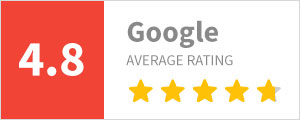You have no items in your shopping cart.
Blog
How to identify prescription safety glasses Z87.1?

Eye protection is something that should be worn by workers in almost every industry. Employers, particularly those in fields where there is the possibility of hazardous materials being present, should make eye safety their top priority in order to protect their employees. Workers in the construction industry can protect themselves from sawdust, workers in laboratories can protect themselves from harmful chemical splashes, and workers in the metalworking industry can protect themselves from sparks, shrapnel, and other hazards.
Therefore, it is essential to ensure that the appropriate eye protection is worn at all times. By placing an emphasis on eye safety, the American National Standards Institute (ANSI) hopes to facilitate a process that is both simpler and more secure. Its standard for eye protection, ANSI Z87.1, lays out the requirements for utilizing, testing, marking, selecting, and maintaining eye protection in order to prevent or reduce injuries caused by eye hazards.
This article provides a breakdown of the standard in order to assist you in making an educated decision when selecting ANSI-compliant safety glasses.
Indications of prescription safety glasses Z87.1
Eye protection must bear markings in accordance with ANSI Z87.1, and those markings must relate directly to the device's capacity to defend against particular hazards. Eye protection glasses that comply with Z87.1 will have the letters "Z87" printed on them.
Additional markings can be broken down into the following categories:
Impact vs. Non-Impact
Splash and Dust Protection
Optical Radiation Protection
The ANSI Z87.1 standard divides eye protection into two categories: impact-rated and non-impact-rated. Eye protection with an impact rating needs to be able to withstand certain high-mass and high-velocity tests, in addition to offering protection to the wearer's eyes from the side. Eye protection that is rated for impact will have a plus sign (+) on it. Flat lenses with an impact rating, for instance, will have the marking "Z87+" on them.
Protection against Dust and Chemical Splashes
Eyewear that complies with the requirements of ANSI Z87.1 for protection against droplets (splashes) or dust will be marked with a code that starts with the letter "D." Take, for instance:
The letter "D3" is printed on eye protection that shields the wearer's eyes from both droplets and splashes. Workers who deal with chemicals on daily basis can go for it.
Eye protection that also protects against dust is designated with the "D4" label. Workers like carpenters can wear these.
The designation "D5" refers to eye protection that offers protection against fine dust. These are ideal for factory workers who operate big machienaries.
Protection Against Optical Radiation
A letter designation, which is typically followed by a rating number, denotes the level of protection against radiation that the lenses of a pair of safety glasses can provide. These are the markings that have been made:
The welding filter is denoted by the letter "W" followed by a shade number ranging from 1.3 to 14.
Filter for ultra-violet rays, denoted by the letter "U" followed by a number between 2 and 6.
Filter for infrared radiation (heat): "R" followed by a number on a scale ranging from 1.3 to 10.
"L" followed by a number on a scale ranging from "1.3" to "10" denotes the Visible Light (Glare) Filter.
Clear lens: There is no further marking
Variable tint: "V"
Special purpose: "S"
When necessary, eye protection will also feature two additional markings, which are as follows:
Eye protection that is sized appropriately for a person with a smaller head will be denoted with the letter "H."
Prescription safety glasses that OSHA has approved will have the manufacturer's logo on them.
Eye protection glasses can have multiple markings on them if they satisfy the criteria for two or more categories at the same time. For instance, lenses marked "Z87+L8D3D4" provide impacted-rated eye protection, as well as glare reduction, protection against droplets and dust, and protection against other types of debris. You can choose the type of safety and protection you need for your eyes based on your profession or the day-to-day activities that you perform.
Wrapping Up
In this blog, we have mentioned a guide on how you can identify ANSI Z87.1 compliant safety glasses. There can be a chance that while shopping for safety glasses you may go for the one that fits in your budget but end up getting the one that doesn’t give your eyes the required amount of protection that it needs. Next time when you are shopping for safety glasses, do keep these points in your mind to avoid such situations If you are looking for Prescription Safety Glasses Online then scroll through our website - CA Glasses and make your purchase today!


